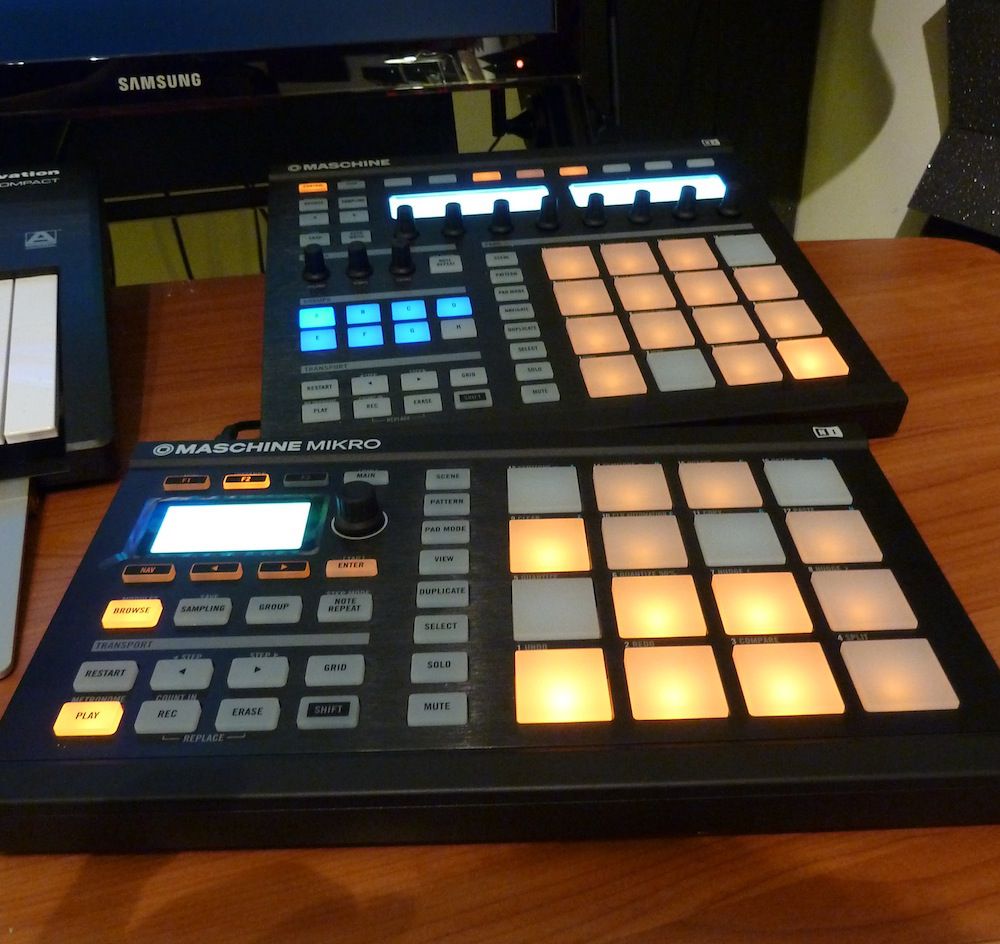The original Native Instruments Maschine has gained a huge following amongst producers and musicians. It appears that the Maschine platform may have even replaced the legendary Akai MPC for many. An impressive task in itself.
The folks at Native Instruments haven't rested on this success but instead continue to expand their Maschine range. Amongst the latest flurry of updates is the new compact Maschine Mikro. Let's take a look at this little fella.
The Same But Different?
The first thing you'll notice about the compact Maschine Mikro is that it sports a lot of the same features as its big brother. For example you still get the same 16 full size, illuminated pads. You also get exactly the same transport section. Likewise the frame is constructed in a very similar manner and seems to be some kind of anodized aluminum. The unit is more or less the same width as the original as well and the build quality is solid throughout.
The differences are also pretty noticeable: this thing is much smaller (in depth at least) and would be a perfect match for a MacBook Pro and ideal for throwing into a laptop bag or back pack. The main things we lose here are the oversized displays from the original unit and dedicated knobs and buttons. These are replaced by a single compact display and a single 'master' knob that clicks to confirm commands.
All in all the design is very consistent with the entire Native Instruments product line and I found that I was able to do pretty much anything I could on the original unit. I did miss the extra features from the larger unit a little but it was nothing I couldn't live with.
The two Maschines side by side for comparison.
Software Heart (1.7)
No matter which hardware controller you choose, the software supplied with each is identical. At the time of this writing the latest version of Maschine will be 1.7 and this update comes with a few handy tricks up its sleeve.
In version 1.6 we got the ability to load our own VST and Audio Unit plug-ins directly from the software's interface. This was a great leap forward for Maschine users and essentially transformed the software into a virtual plug-in host and also gave us hands-on control of all our favorite plug-in parameters via the hardware controller.
In 1.7 you can now also access all of the Native Instruments products from the new Complete 8 collection directly from the Maschine patch browser. This gives you a simply staggering amount of sounds to use in your Maschine-based projects.
On top of all this you also get the original 1.6 GB Maschine sound library. So, whether you go for the original or Mikro model you'll certainly not be short of software features or sounds.
The Maschine software remains the same whichever controller you use.
Verdict
I actually love Maschine and use it a lot in my own projects, so it's no surprise that I also loved this more compact version. The build quality is great and the sound set is tried and tested.
If you are looking for something a little lighter, tighter and cheaper than the original then this is probably the model to opt for. Even if you are a Maschine owner this version could be useful to take on the road or for live performance. Another great piece of kit from Native Instruments.
Maschine Mikro really is simple enough for anyone to use!
Whichever version of Maschine you go for, the software brain behind them is the same! Become a Maschine power user with these 3 Maschine video tutorials by Matt Cellitti.






 © 2024 Ask.Audio
A NonLinear Educating Company
© 2024 Ask.Audio
A NonLinear Educating Company
Discussion
Want to join the discussion?
Create an account or login to get started!